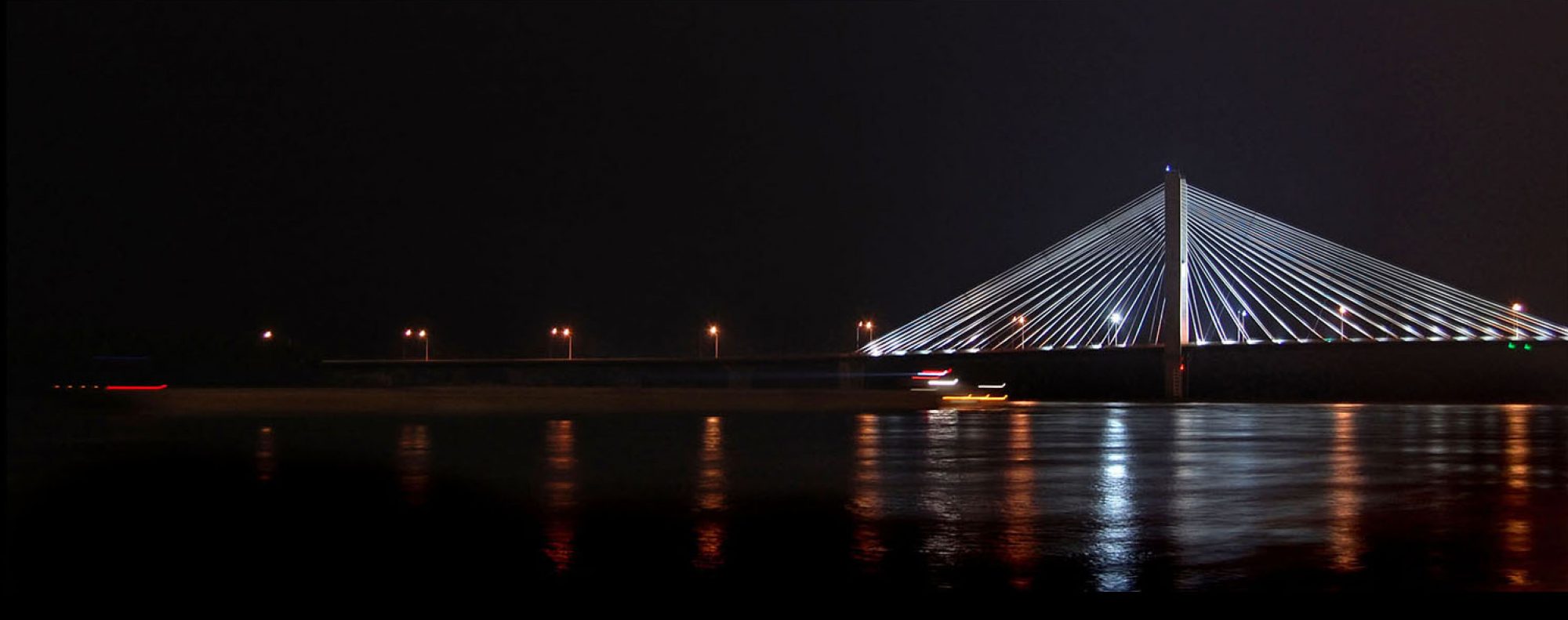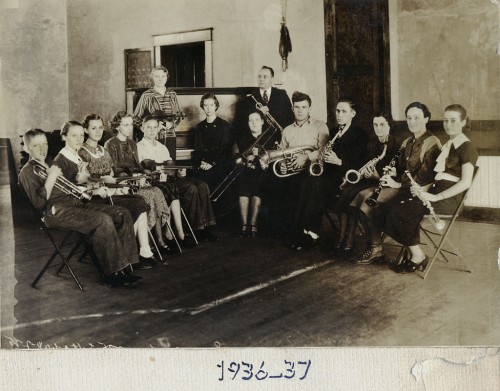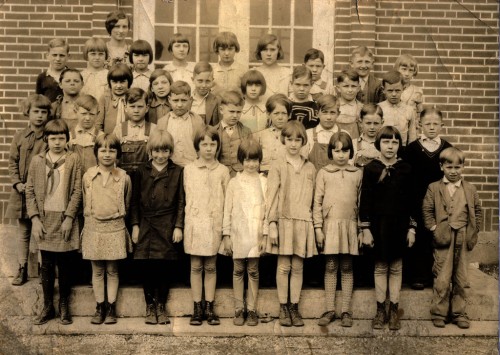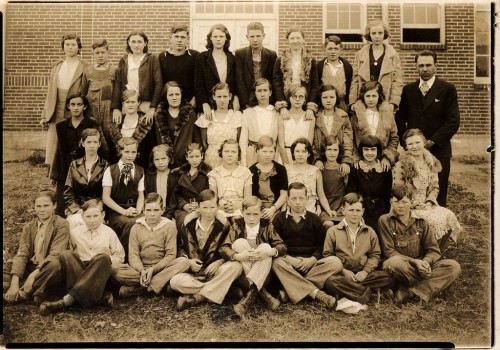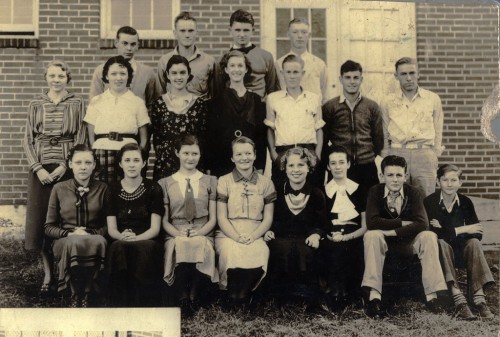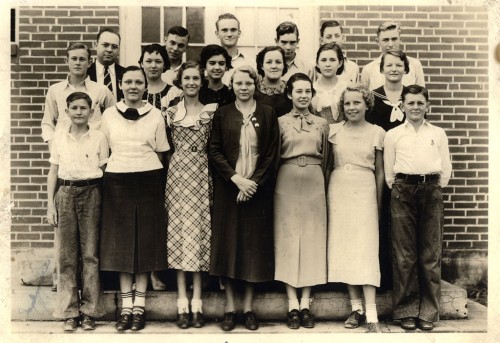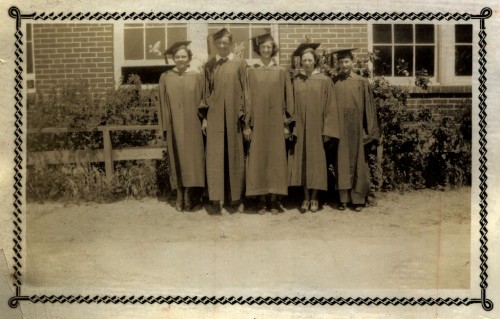 The caption for this July 1, 1967, Missourian Youth Page photo reads, “There was fun for swingers and non-swingers alike at the Civic Center’s Sock Hop last weekend. Caught frozen in poses during the “stop the record” dance are, in the foreground, David Vann and his sister, Miss Peggy Vann, both of 437 rear North Middle; behind them are Ronald Conners, 620 LaCruz, and Miss Gwen Sides, 807 Ranney. Miss Sides is chairman of the center’s Youth Council.
The caption for this July 1, 1967, Missourian Youth Page photo reads, “There was fun for swingers and non-swingers alike at the Civic Center’s Sock Hop last weekend. Caught frozen in poses during the “stop the record” dance are, in the foreground, David Vann and his sister, Miss Peggy Vann, both of 437 rear North Middle; behind them are Ronald Conners, 620 LaCruz, and Miss Gwen Sides, 807 Ranney. Miss Sides is chairman of the center’s Youth Council.
(Click on any photo to make it larger.)
Non-swinger Deborah Allen
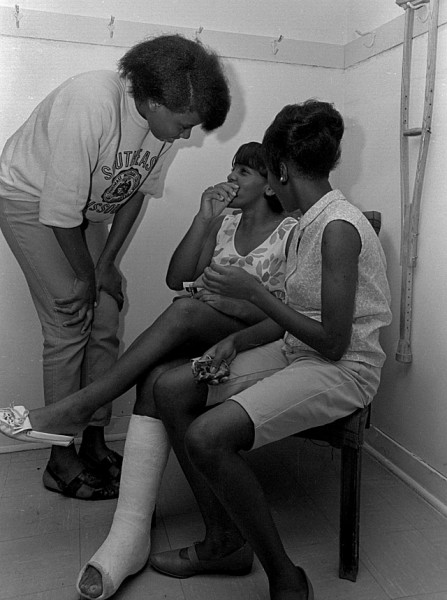 The photo was paired with this one: “In a quieter corner (but not too far from where the action is), Deborah Allen, wearing a cast on her ankle, catches up on the current gossip with Miss Sylvia Duncan, left, and Miss Evelyn Hardimon.”
The photo was paired with this one: “In a quieter corner (but not too far from where the action is), Deborah Allen, wearing a cast on her ankle, catches up on the current gossip with Miss Sylvia Duncan, left, and Miss Evelyn Hardimon.”
Civic Center registration desk
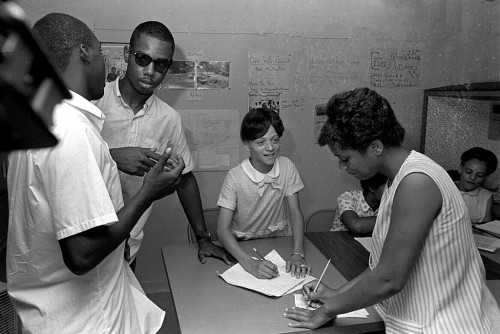 “At the registration desk, James Hughes, left, 1706 South Sprigg, and Lloyd Francis Williams, Vine Street, exchange greetings; Miss Lucille Mosley, 1013 North Middle, signs up Miss Margaret Williams, Vine Street, as a Civic Center member.”
“At the registration desk, James Hughes, left, 1706 South Sprigg, and Lloyd Francis Williams, Vine Street, exchange greetings; Miss Lucille Mosley, 1013 North Middle, signs up Miss Margaret Williams, Vine Street, as a Civic Center member.”
Gwen Sides covered the sock hop
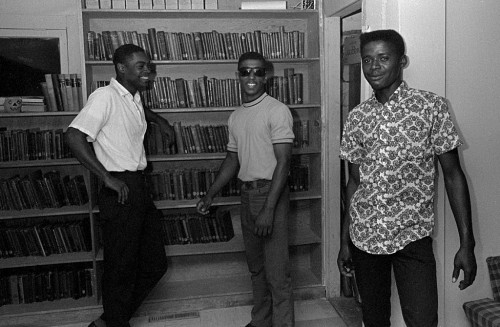 Gwen Sides, chairman of the Civic Center Youth Council, wrote this account of the evening for The Youth Page. [I was editor of The Youth Page and I see some stuff I should have caught. Overall, though, Miss Sides did a much better job covering this story than a lot of our student reporters.]
Gwen Sides, chairman of the Civic Center Youth Council, wrote this account of the evening for The Youth Page. [I was editor of The Youth Page and I see some stuff I should have caught. Overall, though, Miss Sides did a much better job covering this story than a lot of our student reporters.]
“You should have been there,” said Miss Joy Jackson, 906 South Ranney.”
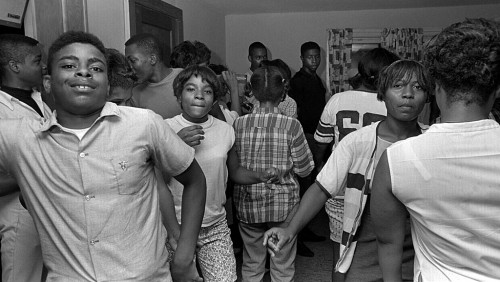 “It was a blast,” agreed Miss Brenda Colon, 513 South Frederick.
“It was a blast,” agreed Miss Brenda Colon, 513 South Frederick.
Their comments came after a membership dance held last Saturday at the Cape Girardeau Civic Center, 1232 South Ranney, by the center’s newly formed Youth Council.
Sock hop without stocking feet
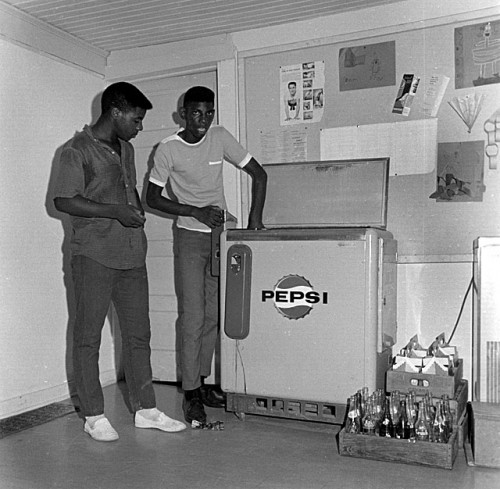 Though it was planned as a sock hop, nobody came in stocking feet – even though Miss Deborah Allen, 920 North Middle, came minus one shoe, with a cast on one leg, hurt in a gym accident at school. She seemed to have a good time, even though she couldn’t join in the dancing.
Though it was planned as a sock hop, nobody came in stocking feet – even though Miss Deborah Allen, 920 North Middle, came minus one shoe, with a cast on one leg, hurt in a gym accident at school. She seemed to have a good time, even though she couldn’t join in the dancing.
The dance was designed to get members for the Civic Center, and it succeeded; we now have 72 members.
Street dance and carnival planned
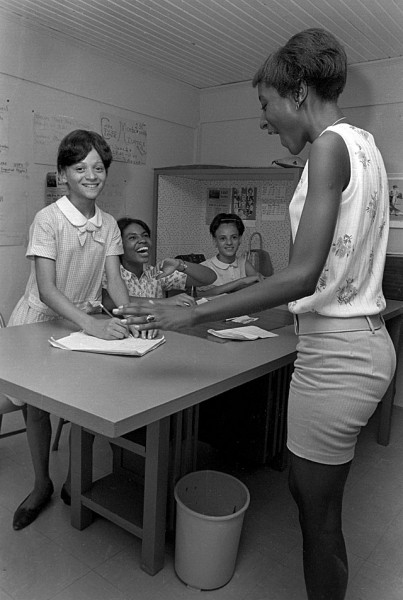 The Youth Council now is making tentative plans for a street dance and carnival to be held later this summmer on the playground area just north of the center. The lot was purchased for the center by Alpha Phi Omega, service fraternity at State College, and has been graded and readied for playground equipment.
The Youth Council now is making tentative plans for a street dance and carnival to be held later this summmer on the playground area just north of the center. The lot was purchased for the center by Alpha Phi Omega, service fraternity at State College, and has been graded and readied for playground equipment.
At Saturday’s dance, the chaperons were Mr. and Mrs. Ed Mosley, 1013 North Middle. Mrs. Herbert Gaden, 1624 South Sprigg, acting director of the Civic Center, also was in attendance.
Balloons bustin’ out all over
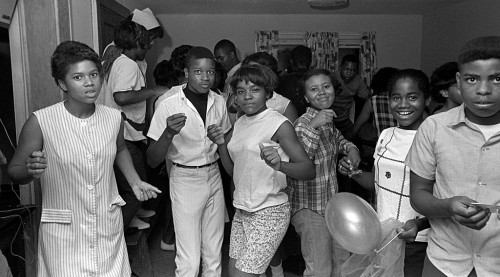 Balloons were bustin’ out all over, as the boys broke balloons tied around the girls’ ankles while they were dancing. Miss Jackson and Jim Clemons, 320 rear South Fountain, won the balloon dance.
Balloons were bustin’ out all over, as the boys broke balloons tied around the girls’ ankles while they were dancing. Miss Jackson and Jim Clemons, 320 rear South Fountain, won the balloon dance.
After the first dance, couple were “rematched” in a puzzling game – with real puzzles. Girls drew part of a picture from one bowl; the boys drew the other halves of each puzzle from another bowl, then they had to find the holder of the missing half of their picture, who would then be their partner for the next dance. Miss Alice Sides, 919 North Frederick and Robert Estes, 1011 North Middle, were the first to match the puzzles.
Open for 13 through high school
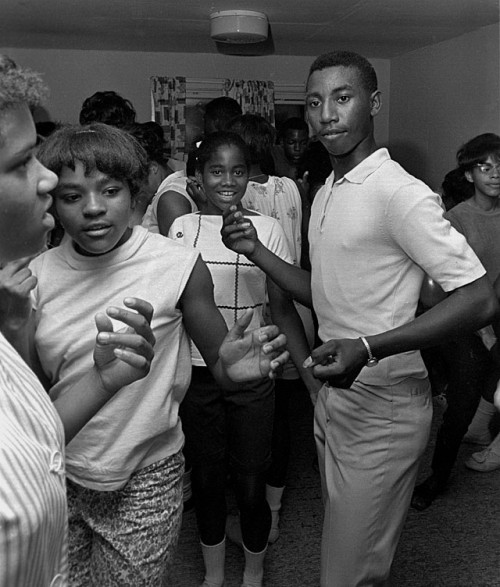 Winners of the “Stop the Record” dance – a variation of the child’s game of “Freeze” – were Miss Vickie Sides, 419 North Street, and Roland Conners, 620 LaCruz, who were able to stop motionless every time the record stopped. This is the first time the group has played games at a dance.
Winners of the “Stop the Record” dance – a variation of the child’s game of “Freeze” – were Miss Vickie Sides, 419 North Street, and Roland Conners, 620 LaCruz, who were able to stop motionless every time the record stopped. This is the first time the group has played games at a dance.
The Civic Center is scheduling a social each Saturday night from 8 to 11. From now on, admittance to the dance will be by membership card only. (The cards are available from Youth Council members or the center director, for 25 cents.) Membership is open to young people from age 13 through the summer after they complete high school. Dress at the dances is casual.
New South Cape blog
I’m not the only one looking at the 1960s in Cape Girardeau. There’s a new blog called South Sprigg Memories, Growing up on the wrong side of town.
 Here’s the writer’s description: “Welcome to Sprigg Street Memories! My name is Darla June Franklin. My maiden name was Yow. This blog will be my place to re-live old memories and introduce you to the people who lived near me in the South Sprigg Street neighborhood of Cape Girardeau, Missouri, during the late 1950’s and early 1960’s.”
Here’s the writer’s description: “Welcome to Sprigg Street Memories! My name is Darla June Franklin. My maiden name was Yow. This blog will be my place to re-live old memories and introduce you to the people who lived near me in the South Sprigg Street neighborhood of Cape Girardeau, Missouri, during the late 1950’s and early 1960’s.”
She writes movingly of the culture divide between the black and white communities from the perspective of a white girl growing up in a mixed neighborhood in South Cape in the early days of integration. She offers some interesting perspectives and her column has found its “voice” more quickly than most I’ve read.
I encourage you to stop by. I’m hooked.
 It’s getting to be Southeast Missouri District Fair time again. That means it’s gonna be cold and rainy or hot and dusty or both. I shared photos of the 1964 Midway last year. I ran across a couple sleeves of other activities to celebrate this year’s Fair.
It’s getting to be Southeast Missouri District Fair time again. That means it’s gonna be cold and rainy or hot and dusty or both. I shared photos of the 1964 Midway last year. I ran across a couple sleeves of other activities to celebrate this year’s Fair.